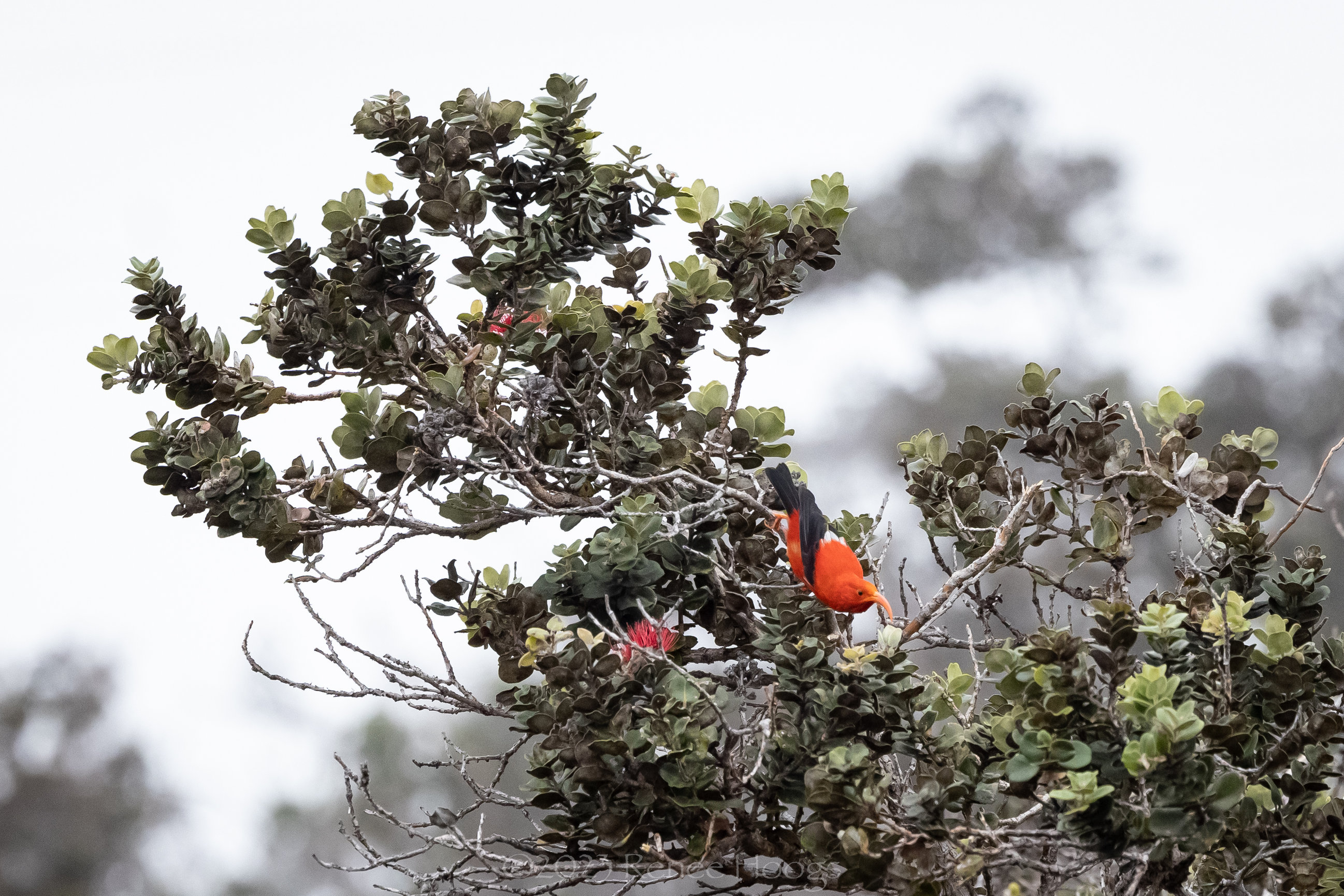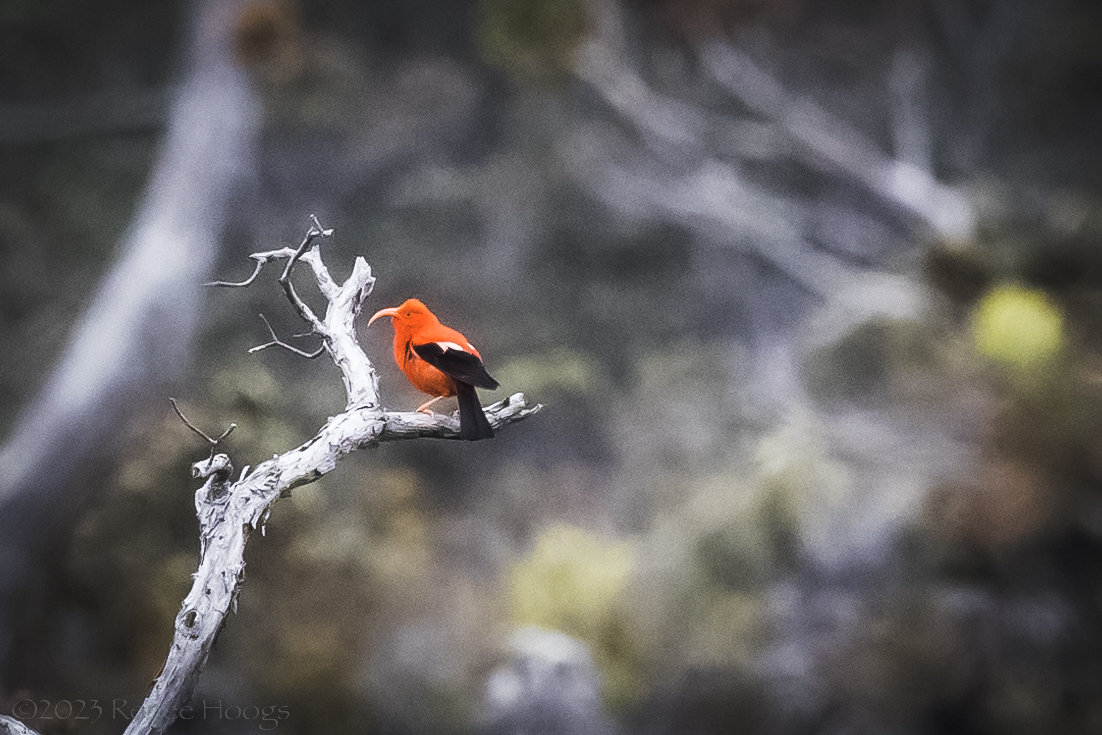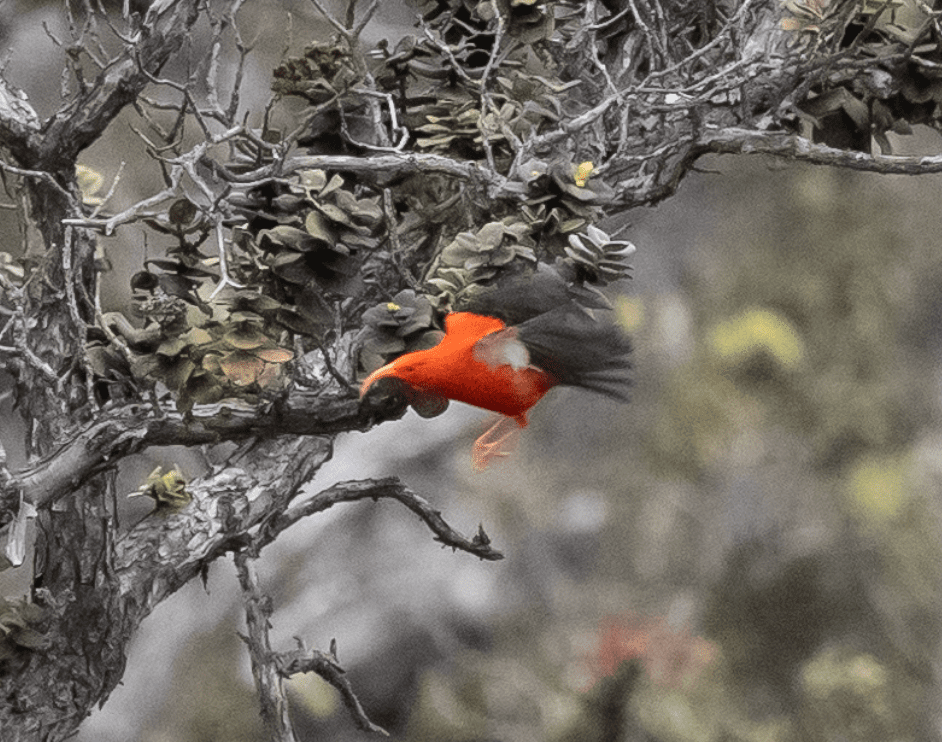The Elusive I'iwi Bird
Saturday, December 10, 2022 | By: Piko Piko Photography
The I'iwi bird, also known as the scarlet honeycreeper, is a beautiful and vibrant bird native to Hawaii. With its bright red plumage and curved, downward-curving bill, it is one of the islands' most iconic and recognizable birds.
The I'iwi bird is a nectar feeder and is an essential pollinator for many of Hawaii's native plants. It is particularly important for the survival of the ohia tree, which is a keystone species in Hawaii's forests. The I'iwi bird is also a food source for the endangered Hawaiian hawk and the Hawaiian owl.
Unfortunately, the I'iwi bird faces several threats in the wild. Habitat loss, caused by the destruction of native forests, is one of the biggest threats to the species. The I'iwi bird is also susceptible to avian diseases such as avian malaria and avian pox, which are spread by introduced mosquitoes. Climate change also contributes to the decline of I'iwi birds, as the mosquitoes that carry avian diseases thrive in warmer temperatures.
Conservation efforts are underway to protect the I'iwi bird and its habitat. These efforts include the protection and restoration of native forests, the control of invasive species, and the implementation of disease management programs.
It's important to note that, while in Hawaii, it's common to see wild I'iwi birds, feeding them is not recommended as it can disrupt their natural behavior and put them at risk of disease.
In conclusion, the I'iwi bird is a beautiful and important species facing several threats in the wild. Conservation efforts are needed to protect the I'iwi bird and its habitat. Individuals can also help by supporting conservation organizations and being mindful of their environmental impact when visiting Hawaii.





Leave a comment
0 Comments